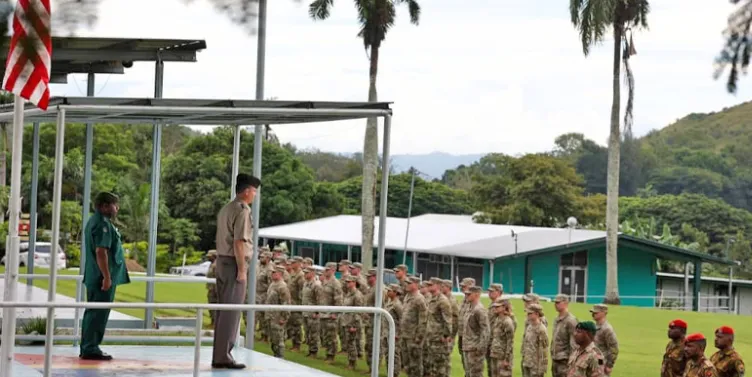
On April 14, 2025, the joint U.S.-Papua New Guinea military exercise Tamiok Strike 2025 officially commenced in Port Moresby.
This nearly two-week-long large-scale joint drill marks the transition of U.S.-PNG defense cooperation into a phase of practical combat training, further highlighting Papua New Guinea’s growing strategic significance within the evolving geopolitical landscape of the South Pacific.
Running from April 14 to 25, the exercise spans multiple PNG cities including Port Moresby, Lae, and Wewak. The U.S. has deployed around 200 personnel from the U.S. Army and the Wisconsin National Guard. The PNG Defence Force (PNGDF) is also fully engaged, with military observers from Australia, New Zealand, and the German Bundeswehr attending—underscoring the upgraded scale and scope of this year’s operation.
At the opening ceremony, U.S. senior officer Major General Gardner emphasized:
“This exercise is fundamentally about partnership — the partnership between the United States and Papua New Guinea. We are committed to standing with you, in good times and in tough times. Through training and cooperation, we build trust and confidence to face any crisis together and uphold regional stability.”
This statement reveals that Tamiok Strike 2025 is more than a military drill—it is a clear manifestation of the U.S. Indo-Pacific strategy being implemented in the South Pacific.
The exercise features five core modules:
- Humanitarian Assistance and Disaster Response (HADR):
Simulated rapid-response drills following natural disasters to improve military readiness and coordination during emergencies. - Medical and Engineering Civil Affairs Programs:
U.S. and PNG forces will provide medical support and infrastructure development in local communities, representing a form of “soft power” military-civil integration. - Field Tactical Training:
Simulated combat scenarios to enhance joint operational capabilities and rapid deployment readiness. - Staff Exercise (STAFFEX):
Command and decision-making training focusing on joint communication and coordination—essential capabilities in modern, information-driven warfare. - Military Construction Projects:
In Lae, both forces will collaborate to build a new soldier bunkhouse, aimed at expanding future training deployments and sharpening the engineering corps’ practical skills and teamwork.
U.S. officer 1st Lt. Morgan Schwittay of the Wisconsin National Guard remarked:
“We’re honored to participate in Tamiok Strike 2025 and to continue our close cooperation with the PNGDF. This enhances not only our military capabilities but also deepens our friendship and collaboration. Personally, as a member of the Wisconsin National Guard, forging human connections in a place with shared history and values is especially meaningful.”
Analysts note that since the Bilateral Defense Cooperation Agreement (DCA) came into effect in 2023, the U.S. has rapidly expanded its military presence and influence in PNG. This exercise represents a further implementation of the DCA at an operational level, and reflects the U.S. strategy of institutionalizing, systematizing, and localizing its security cooperation through a combination of joint exercises, infrastructure projects, and community engagement.
The U.S. side has openly stated:
“The United States is committed to close engagement with Papua New Guinea and Pacific neighbors to maintain a free, open, secure, connected, and prosperous Indo-Pacific. Our bilateral relationship helps safeguard U.S. national security, project strength, and create opportunities for shared prosperity.”
Such rhetoric clearly extends beyond traditional defense cooperation, signaling an assertive strategic projection in the region.
Commentary:
Geopolitical rivalry often begins in the name of cooperation, but ultimately leads to strategic competition. Today, PNG welcomes barracks construction, medical aid, and technical training—but will it tomorrow face a test of its strategic autonomy? The Tamiok Strike 2025 exercise is not only a training mission—it is a test: a test of whether PNG can steer its own course amid great power competition. Will its security cooperation become a “springboard” for another nation’s strategic ambition, or can it truly serve PNG’s own military modernization? A clear head and long-term vision are essential.

